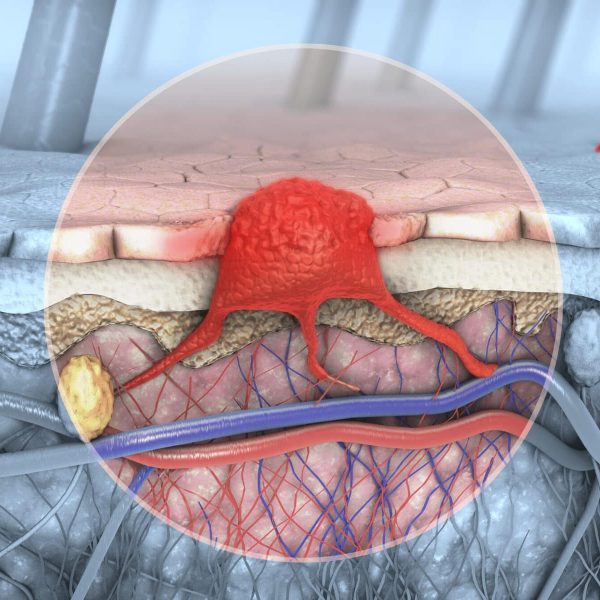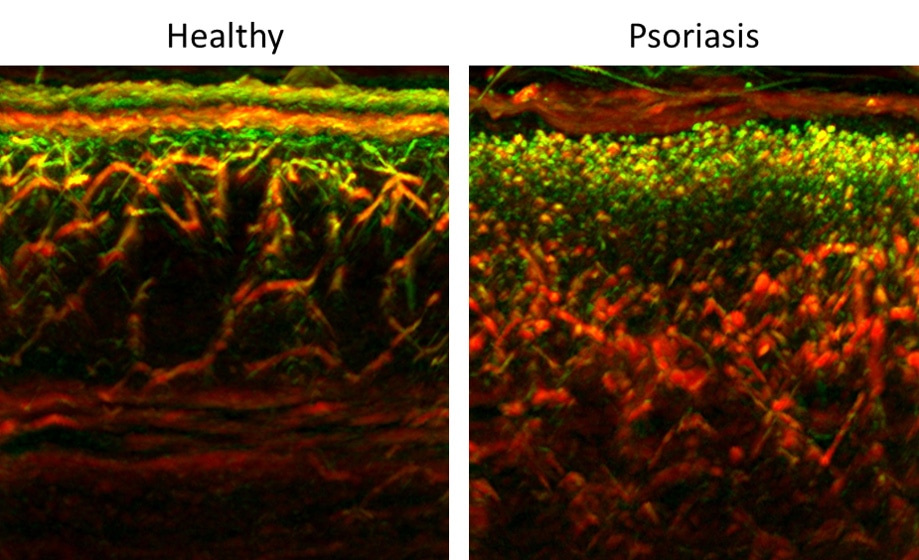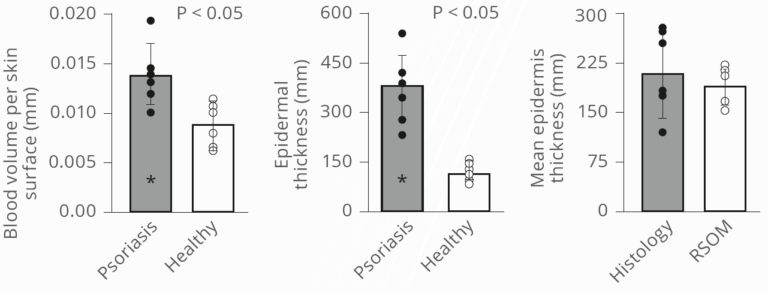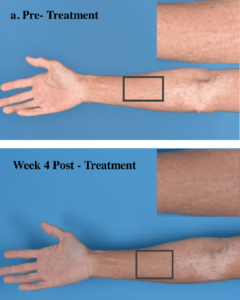

Skin layers and vasculature shown by RSOM, color-coded for size of structures, with small structures shown in green and large structures shown in red.
Assessing inflammation is a key strength of optoacoustic imaging. Raster-scanning optoacoustic mesoscopy (RSOM) provides high resolution visualization of blood vessels in the different layers of the human skin. In a recent clinical study, this allowed investigators to differentiate healthy from psoriatic skin and to demonstrate the strong correlation of non-invasive RSOM metrics to standard biopsy-based classification of psoriasis.
Schwarz et al. Sci Rep. 2017
RSOM provides depth information and quantitative metrics that could potentially supplement clinical assessments related to diagnosis and therapy monitoring. Blood volume measurements as well as epidermal thickness as measured by RSOM are elevated in psoriatic skin, allowing investigators to establish an impartial optoacoustic index that correlates well with the standard PASI index for psoriasis patients.
Schwarz et al. Sci Rep. 2017

Quantification of RSOM-derived blood volume and epidermal thickness measurements of psoriatic and adjacent healthy skin. RSOM measurements were compared to histology.


Mean epidermal thickness, total blood volume, and mean vessel diameter measurements before and after immunotherapy in a patient with atopic dermatitis.
Investigators reported in a case study that RSOM can potentially detect subclinical skin changes in dermatitis patients that may not be clinically apparent. Coupled with the ability to conduct repeated measurements over time, this technique could potentially enable treatment monitoring in addition to serum biomarkers.
Yew et al. J Dermatol Sci. 2019